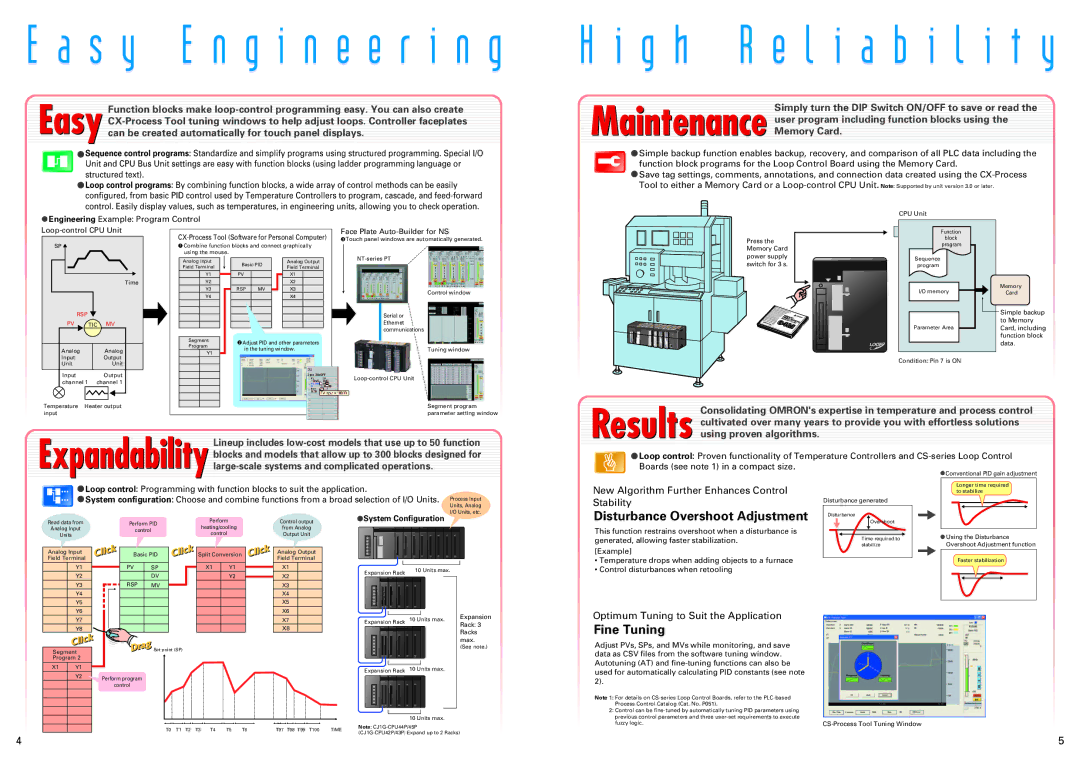CJ-Series specifications
The Omron CJ-Series is a cutting-edge line of programmable logic controllers (PLCs) designed to meet the demands of modern industrial automation. The CJ-Series is noted for its robust architecture, flexibility, and a broad range of functions that cater to a variety of applications.One of the standout features of the CJ-Series is its modular design, which allows users to create a system tailored to their specific needs. The series supports numerous input and output modules, enabling the seamless integration of various sensors, actuators, and other devices. This modularity not only simplifies system expansion but also allows for easy maintenance and upgrades without the need for complete system overhauls.
Another notable characteristic of the CJ-Series is its high processing speed and capacity. Equipped with advanced processing technology, these PLCs can handle complex control tasks efficiently, making them suitable for high-speed applications in sectors like automotive manufacturing, food and beverage production, and packaging. The CJ-Series also features an extensive memory capacity, allowing for the storage of large programs and enhanced data handling capabilities.
Communication is a critical aspect of modern automation systems, and the CJ-Series excels in this area as well. It is compatible with various communication protocols, such as EtherNet/IP, DeviceNet, and Profibus, facilitating easy integration with existing networks. This versatility ensures that the CJ-Series can communicate seamlessly with other devices and systems, enriching data exchange and overall system performance.
One of the advanced technologies incorporated in the CJ-Series is the use of function blocks and structured programming, which simplify complex programming tasks. This approach allows users to create more organized programs that are easier to debug and maintain. The CJ-Series also offers support for various programming languages, including ladder logic, structured text, and function block diagrams, catering to different user preferences and expertise.
Reliability and durability are intrinsic features of the CJ-Series. Designed to withstand harsh industrial environments, these PLCs offer robust protection against temperature variations, electrical noise, and other potential hazards. This resilience ensures long-term operational stability, reducing downtime and maintenance costs.
In summary, the Omron CJ-Series represents a significant evolution in PLC technology, boasting modularity, high processing capabilities, advanced communication options, and user-friendly programming. With these features, the CJ-Series stands out as an ideal solution for a wide range of industrial automation needs, empowering manufacturers to operate efficiently and effectively in an increasingly competitive landscape.

